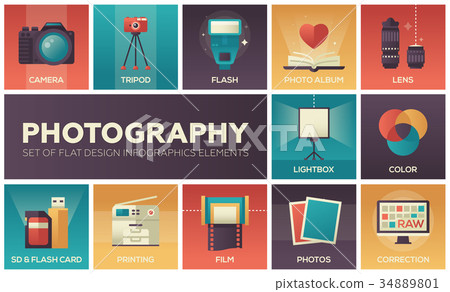What Every Photographer Must Learn About Illumination
What Every Photographer Must Learn About Illumination
Blog Article
Write-Up By-Parks Covington
As a digital photographer, you recognize that illumination can make or damage your images. Understanding the subtleties of both all-natural and fabricated light is important for catching the mood and clarity you go for in your job. Whether you're chasing after the perfect gold hour radiance or tweak your fabricated arrangements, mastering these aspects can elevate your digital photography dramatically. However there prevail mistakes that several neglect, and recognizing them can change your technique to every shoot. Allow's explore what you may be missing and exactly how it can affect your outcomes.
Comprehending Natural Light
Recognizing all-natural light is critical for any type of digital photographer wanting to boost their work. It's the structure of great photography, affecting state of mind, tone, and quality. When https://www.doublescoop.art/an-out-of-work-wedding-photographer-revisits-his-fine-art-career/ fire outdoors, take note of the time of day. The golden hour-- shortly after sunrise and before sunset-- supplies soft, warm light that can transform normal scenes into stunning pictures.
Don't take too lightly the power of overcast days. Cloud cover diffuses sunlight, producing a soft, even light that's excellent for portraits and macro photography. You'll discover colors appear this type of lighting without harsh shadows.
Placing issues, also. Always consider your subject's orientation to the light source. If the sunlight's behind your subject, you may end up with a silhouette, which can be significant however mightn't be what you desire. Alternatively, direct sunlight can produce unflattering shadows.
Explore angles; in some cases, changing your point of view can generate amazing outcomes. Usage natural reflectors, like water or sand, to jump light onto your subject, including dimension.
Learning Artificial Light
Understanding fabricated light is vital for professional photographers that want to take their skills to the following level. Whether you're utilizing speedlights, studio strobes, or continual lights, understanding just how to control these sources can substantially enhance your pictures.
Beginning by acquainting on your own with the basics of light quality, direction, and color temperature level. Explore various modifiers like softboxes, umbrellas, or grids to regulate the softness or cruelty of the light.
You'll find that soft light commonly develops complementary outcomes, while harsher light can add dramatization and deepness. Don't shy away from darkness; they can improve the three-dimensionality of your subjects.
Pay close attention to the placement of your lights. A light positioned also near your topic can develop uncomplimentary results, while as well away can bring about an absence of detail. Make use of a light meter or your electronic camera's pie chart to guarantee you're subjecting properly.
Last but not least, remember that fabricated light can be combined with ambient light for innovative impacts. Balancing these resources might take practice, but once you grasp it, your photography will absolutely beam.
Techniques for Various Circumstances
When you enter various capturing situations, adjusting your lights strategies is crucial for catching the very best pictures. For outdoor pictures, make use of the gold hour-- early morning or late afternoon light-- to soften darkness and boost skin tones.
If it's an extreme noontime sun, think about using a reflector to jump light back onto your subject or seek shaded areas for a more also exposure.
In low-light circumstances, like interior events, increase your ISO and use a wide aperture to allow in more light. https://postheaven.net/suzanne49prince/innovative-ways-to-market-your-digital-photography-services can aid eliminate electronic camera shake, allowing for longer direct exposures without blurring.
If you're shooting at evening, try out off-camera flash to create dynamic lights and deepness in your images.
For product digital photography, make use of diffused illumination to avoid rough reflections. Softboxes or light tents can assist accomplish this impact.
When photographing landscapes, take into consideration the direction of light and time of day, as it can substantially transform the state of mind of your shot.
Constantly prepare to adjust your settings and positioning based on the circumstance, as versatility is vital to mastering lights in photography.
Verdict
Finally, mastering lights is crucial to boosting your photography skills. Accept natural light's charm throughout golden hour, and don't shy away from trying out synthetic light techniques. By adjusting your approach to various situations, you'll catch spectacular photos that resonate with emotion and clearness. Remember, the right illumination can transform an average shot into something amazing, so keep exercising and improving your understanding of both natural and synthetic light. Happy shooting!
